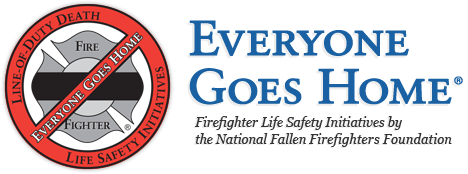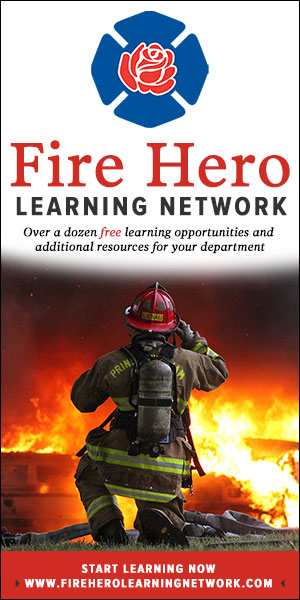Jack Sullivan, CSP, CFPS, Director of Training
Emergency Responder Safety Institute
www.respondersafety.com
Firefighters regularly respond to various calls for service. Medical assist calls, building fires, motor vehicle crashes, brush fires, hazardous material incidents and technical rescues are our business. Almost every time we step out of our rig at the scene we step into harm’s way. There are many incidents that occur each year where firefighters and other emergency responders are struck by vehicles. The problem affects firefighters, emergency medical services personnel, law enforcement officers, towing and recovery operators and safety service patrols.
So far, 2015 has been an especially dangerous year for firefighters and EMS personnel. There have already been a number of injuries and fatalities from personnel being struck by vehicles.
Here is an overview of what you need to do to protect yourself and your personnel while operating in or near moving traffic at roadway incidents. We refer to these strategies and tactics as traffic incident management or “TIM.”
Training
First and foremost develop a safety training class for your personnel about the dangers of working near moving traffic and the strategies and tactics for roadway incident scene safety. Review and implement the guidelines offered in the National Fire Protection Association (NFPA) 1500 Standard on Fire Department Occupational Safety and Health Program on traffic incident operations. Utilize tabletop exercises to teach personnel how to setup scene safety measures and reduce the potential for personnel to be struck by passing vehicles.
Take advantage of the numerous training options available nowadays related to the subject of TIM. The Federal Highway Administration (FHWA) has deployed a nationwide training effort – The National TIM Train-the-Trainer Program to develop local level authorized TIM instructors in almost every state. These 12-hour programs prepare experienced fire service instructors to deliver a standardized TIM training program to multi-agency groups. Look for the National TIM Train-the-Trainer programs in your area or contact your state police or state transportation officials for a list of authorized instructors in your area.
The Emergency Responder Safety Institute has developed a series of online learning modules that are available to all responders for free. Register at learning.respondersafety.com for access to the modules that address all aspects of roadway incident response safety, strategies and tactics. Additional modules are in development all the time. And numerous resources, training aids and reference material are also available for free at the main website – www.respondersafety.com .
Interagency Collaboration, Cooperation and Communication – Collaborate with your fire and emergency medical services mutual aid agencies and local and state police to plan roadway scene safety strategies. Work to develop a regional standard operating procedure or guideline. Communicate frequently with the other agencies on procedures and incident reviews. Strive to improve strategies and tactics on a regular basis. Traffic Incident Management Committees or Task Groups are an excellent way to promote and facilitate ongoing communication and collaboration.
Scene Safety
Design emergency lighting equipment and high-visibility graphics into emergency apparatus and consider retrofitting existing rigs with features that will enhance scene safety.
High-visibility chevrons on the rear of fire and EMS apparatus are now called for in NFPA standards. The NFPA 1901 and 1917 standards offer specific guidance for the design of high visibility markings on fire apparatus and ambulances.
Advanced warning in the form of signs, cones and flares should be placed upstream of the incident to get the attention of approaching motorists. Florescent pink signs have been designated for use at emergency scenes. Cones should be orange and 28 to 36 inches tall with reflective striping. Each emergency vehicle should carry a minimum of 5 cones. As these temporary traffic controls are deployed consider reducing some of the emergency vehicle warning lights on scene. Newer emergency lights are extremely bright at nighttime and can prevent motorists in the area from seeing emergency personnel working around apparatus. Utilize the high power/low power switches provided on most control heads.
Teach your personnel how to park apparatus at an incident to block the work area and protect victims and responders. Fire apparatus should be parked at an angle with the front wheels turned away from the work area. Be sure to deploy properly designed and sized chock blocks for each rig. EMS rigs should be parked in the safe area to protect the loading zone. Company officers should remind personnel to disembark from the apparatus on the side away from traffic as you arrive at the scene.
Personal Protective Equipment
All personnel operating at roadway incidents should be wearing proper personal protective equipment including helmets. The use of helmets has helped save lives on several occasions, when firefighters have been struck at roadway incidents. Make sure your personnel wear appropriate footwear that features slip-resistant soles.
Provide your personnel with high-visibility garments to wear when they are working near moving traffic. Personnel should not wear vests while engaged in firefighting operations but all other personnel at roadway incidents should be wearing garments that provide reflective and florescent features. The garments should be compliant with the most recent edition of the American National Standards Institute (ANSI) 107 or 207 standards.
Public Education
Most states have a law that requires motorists to move over or slow down when approaching stationary emergency vehicles. Those of you who respond on a routine basis know that it seems like very few motorists seem to be aware of that law. We need to do our part to educate the public to “Move Over or Slow Down.” We can do that by providing handouts and displays in our fire stations for visitors. We can do community outreach presentations to tell people about the dangers we face on the roadways. We can collaborate with school systems and school resource police officers to do presentations in high school driver’s education classes. Be sure to include roadway safety as one of the topics you cover during Fire Prevention Week activities. Write articles for your local community based newspapers. Put message signs up at your stations about the subject. Work with local cable service providers, television and radio stations to develop and present public service messages about the subject. Be creative!
These basic steps are just one part of the bigger picture to firefighter safety. It’s imperative to review and incorporate the 16 Life Safety Initiatives into your discussions and training plans to improve your strategies and to keep everyone safe.
Proactive safety measures you take today may help save a life or prevent an injury the next time you roll out of the station. Seasoned “road warriors” always watch their back when operating at roadway incidents.


